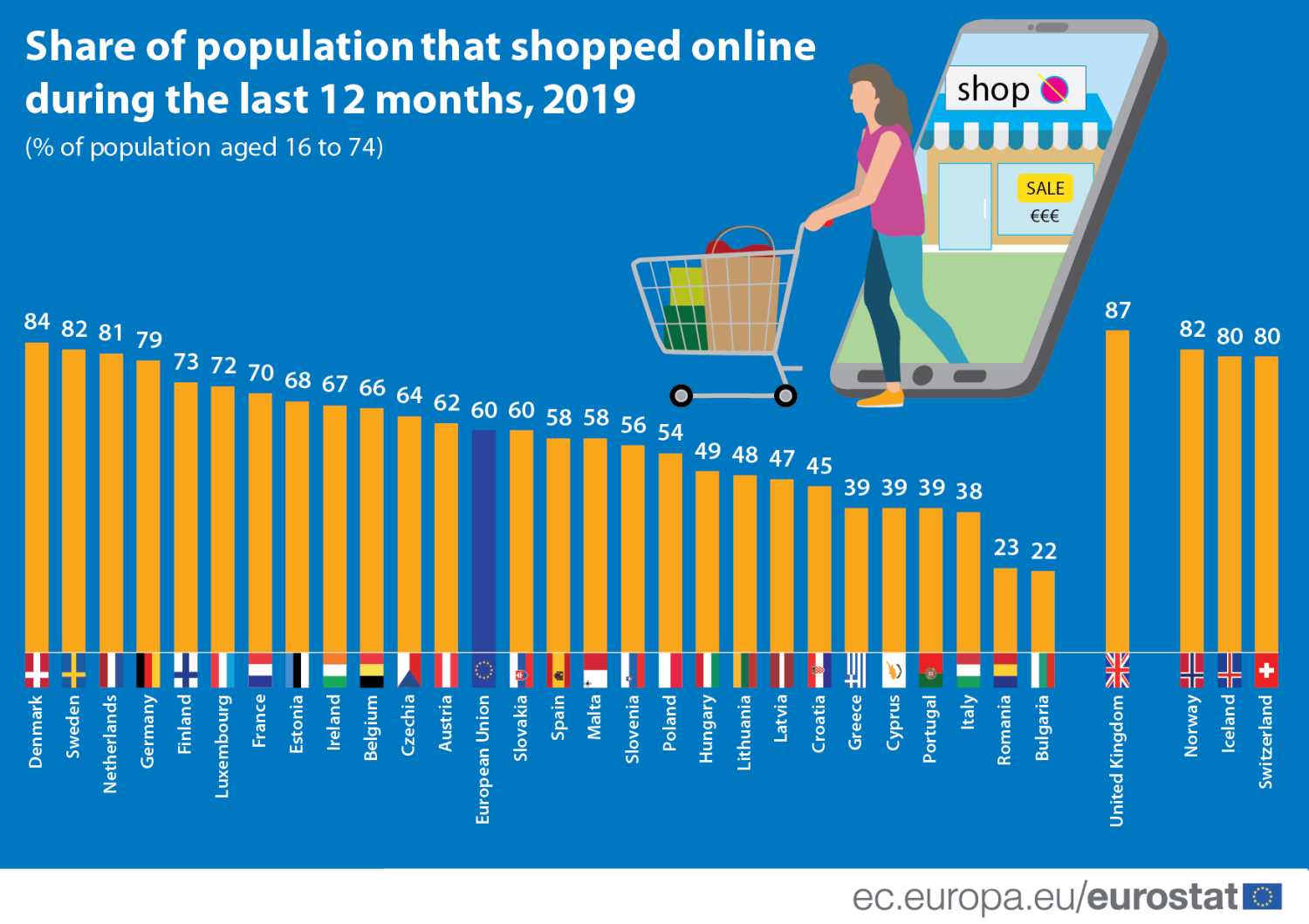Online shopping has increased drastically in the Czech Republic over the past decade, and is now ahead of the European Union average, while in the past it had lagged behind.
“Together with increasing use of the internet and improving security standards, consumers appreciate the possibilities of being able to shop anytime, anywhere, with access to a wide range of products and easy price comparisons. During the current coronavirus pandemic, with high streets in lockdown and consumers under social distancing restrictions, e-commerce can be expected to grow further,” European Union statistical arm Eurostat said.
Some 60% of people in the EU aged 16 to 74 shopped online during the year prior to the 2019 survey, compared with 56% of the EU-27 (and 60% in the EU-28) in the 2018 survey. Compared with 2009, the share of online shoppers had almost doubled from 32% of the EU-27 and 36% of the EU-28. (The EU-27 does not include Britain, which left the EU on January 31, 2020.)
The trend was even clearer in the Czech Republic, where 64% shopped online before the 2019 survey. In 2019, it was 59% and in 2009 it was 24%. In the age group of Czechs between 16 and 29 years of age, some 85% shopped online in 2019, also ahead of the EU-27 average of 76% for that age group. This drops to 23% of Czechs aged 65 to 74 years, which is behind the EU-27 average of 19%.

“Men tend to shop online slightly more than women, with 61% of men and 59% of women shopping online. However, the share of online shoppers has increased more among women over the last 10 years (from 29% in 2009 to 59% in 2019) than among men (from 35% in 2009 to 61% in 2019),” Eurostat states.
The share of online shoppers in the EU-27 has increased substantially among all age groups over the last 10 years, in particular for the age groups between 16 and 54 years old. The highest share and the highest increase was among internet users aged 25 to 34 years, from 46% in 2009 to 79% in 2019, followed by the age groups 16 to 24 years, up from 41% to 73%, 35 to 44 years, up from 41% to 71%, and 45 to 54 years, up from 31% to 61%.
The share of online shopper rose also in the group of persons aged 55 to 64 years, from 19% in the 2009 survey to 45% in the 2019 survey, as well as for those aged 65 to 74 years, up from 8% to 28%.
In general, the highest shares of people who shopped online during the previous year in 2019 were recorded in particular in the Scandinavian countries. Denmark at 84%, up from 64% in 2009. was the leader of the EU-27. Closely following was Sweden (82%). the Netherlands was at 81%, Germany at 79% and Finland at 73%. Non-EU member Britain was at 87%, while Norway was 82%, and Iceland and Switzerland were both 80%.
Bulgaria was in last place with 22%, up from just 5% a decade earlier, while Romania was at 23%. Of all countries surveyed, non-EU member Montenegro was lowest at 16%. In 2018, Albania registered at 5%, but 2019 figures were not available.
The highest increase over the last 10 years was in Estonia, with the share of online shoppers up 51 percentage points from 17% in 2009 to 68% in 2019.












 Reading time: 2 minutes
Reading time: 2 minutes 

























